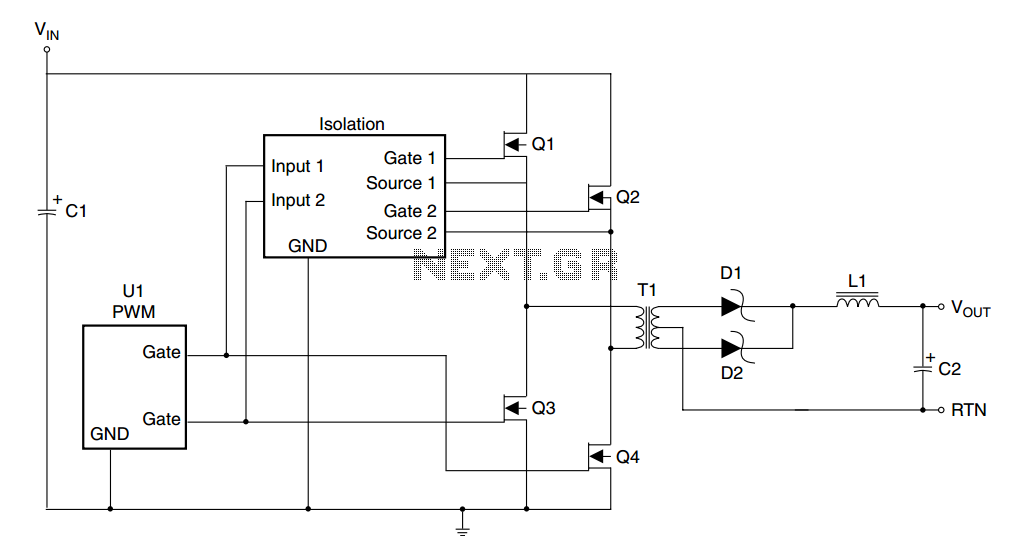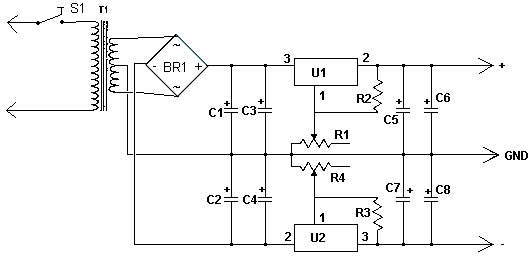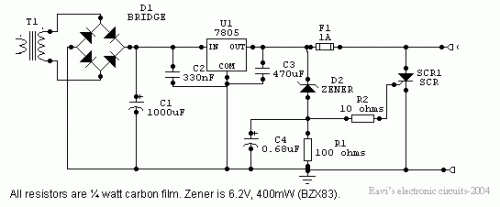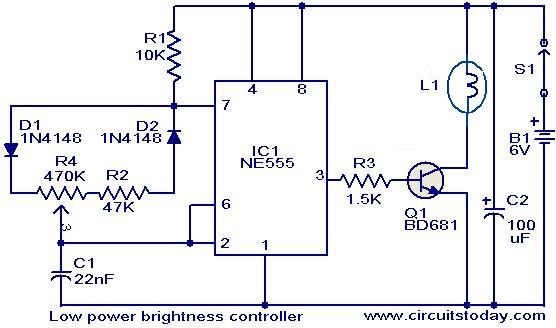
Power Converter Topology and MOSFET for 48-V Telecom Systems

A typical specification can range from a low of 36V to a high of 72V, with a nominal value of 48V. In some designs, transients exceeding 100V must be considered. Most of these designs will require input to output isolation of up to 1500V. Output voltages are frequently 5V and below, with 3.3V being the most common requirement, and 2.5V gaining in popularity. If a processor is present on the card, voltages as low as 1.3V are not uncommon. A common approach is to regulate a distributed power bus, such as the 5V rail, and then use non-isolated DC/DC converters to generate lower voltages. With the shift away from 5V, the 3.3V rail is beginning to serve as the distributed bus; however, from the perspective of the power supply designer, this situation is not ideal. Fairchild has recently introduced a family of high voltage MOSFETs with drain voltage specifications ranging from 80V to 200V. This application note will provide information helpful in the proper selection of FETs for primary side switches available in various types of 48V power converters.
In designing power conversion circuits, the specifications for input voltage, output voltage, and isolation are critical. A range of 36V to 72V with a nominal value of 48V is common in many applications, particularly in systems that may experience transients above 100V. The requirement for input-to-output isolation of up to 1500V ensures safety and reliability in high-voltage environments.
Output voltage requirements typically focus on lower voltages, with 3.3V and 2.5V becoming increasingly prevalent, especially in modern digital circuits where processors may operate at lower voltage levels, such as 1.3V. This necessitates a well-designed power distribution system that can effectively manage voltage regulation and conversion.
A common method for achieving this is through the regulation of a distributed power bus, often starting with a 5V rail. Non-isolated DC/DC converters can then be employed to step down this voltage to the required levels for various components. However, with the industry trend moving towards lower voltage systems, the 3.3V rail is emerging as a more prevalent distributed bus. This shift presents challenges for power supply designers, as the transition may not align with optimal design practices.
The introduction of high voltage MOSFETs by Fairchild, with specifications ranging from 80V to 200V, provides an essential tool for power supply designers. These MOSFETs can be utilized as primary side switches in various types of 48V power converters, enhancing the efficiency and performance of the overall power management system. Proper selection of these FETs is crucial to ensure that they meet the demands of the specific application while maintaining reliability and safety standards. This application note serves as a valuable resource for understanding the criteria for selecting the appropriate FETs for use in these power conversion designs.A typical specification can range from a low of 36V to a high of 72- with a 48-V nominal. In some designs, transients in excess of 100V need to be considered. Most of these designs will require input to output isolation of up to 1500V. Output voltages are frequently 5V and below with 3. 3V probably the most common requirement, and 2. 5V gaining in popularity. If a processor is on the card, voltages as low as 1. 3V are not unlikely. One common approach is to regulate a distributed power bus, say the 5V rail, and then use non-isolated DC/DC converters to generate lower voltages. With the tendency away from 5V, the 3. 3V rail is beginning to serve as the distributed bus, although, from the power supply designer`s perspective, this is not the most of desirable situations.
Fairchild has recently introduced a family of high voltage MOSFETs ranging from 80- to 200-V drain voltage specifications. This application note will provide information helpful in the proper selection of FETs for primary side switches available in various types of 48V power converters.
🔗 External reference
In designing power conversion circuits, the specifications for input voltage, output voltage, and isolation are critical. A range of 36V to 72V with a nominal value of 48V is common in many applications, particularly in systems that may experience transients above 100V. The requirement for input-to-output isolation of up to 1500V ensures safety and reliability in high-voltage environments.
Output voltage requirements typically focus on lower voltages, with 3.3V and 2.5V becoming increasingly prevalent, especially in modern digital circuits where processors may operate at lower voltage levels, such as 1.3V. This necessitates a well-designed power distribution system that can effectively manage voltage regulation and conversion.
A common method for achieving this is through the regulation of a distributed power bus, often starting with a 5V rail. Non-isolated DC/DC converters can then be employed to step down this voltage to the required levels for various components. However, with the industry trend moving towards lower voltage systems, the 3.3V rail is emerging as a more prevalent distributed bus. This shift presents challenges for power supply designers, as the transition may not align with optimal design practices.
The introduction of high voltage MOSFETs by Fairchild, with specifications ranging from 80V to 200V, provides an essential tool for power supply designers. These MOSFETs can be utilized as primary side switches in various types of 48V power converters, enhancing the efficiency and performance of the overall power management system. Proper selection of these FETs is crucial to ensure that they meet the demands of the specific application while maintaining reliability and safety standards. This application note serves as a valuable resource for understanding the criteria for selecting the appropriate FETs for use in these power conversion designs.A typical specification can range from a low of 36V to a high of 72- with a 48-V nominal. In some designs, transients in excess of 100V need to be considered. Most of these designs will require input to output isolation of up to 1500V. Output voltages are frequently 5V and below with 3. 3V probably the most common requirement, and 2. 5V gaining in popularity. If a processor is on the card, voltages as low as 1. 3V are not unlikely. One common approach is to regulate a distributed power bus, say the 5V rail, and then use non-isolated DC/DC converters to generate lower voltages. With the tendency away from 5V, the 3. 3V rail is beginning to serve as the distributed bus, although, from the power supply designer`s perspective, this is not the most of desirable situations.
Fairchild has recently introduced a family of high voltage MOSFETs ranging from 80- to 200-V drain voltage specifications. This application note will provide information helpful in the proper selection of FETs for primary side switches available in various types of 48V power converters.
🔗 External reference





